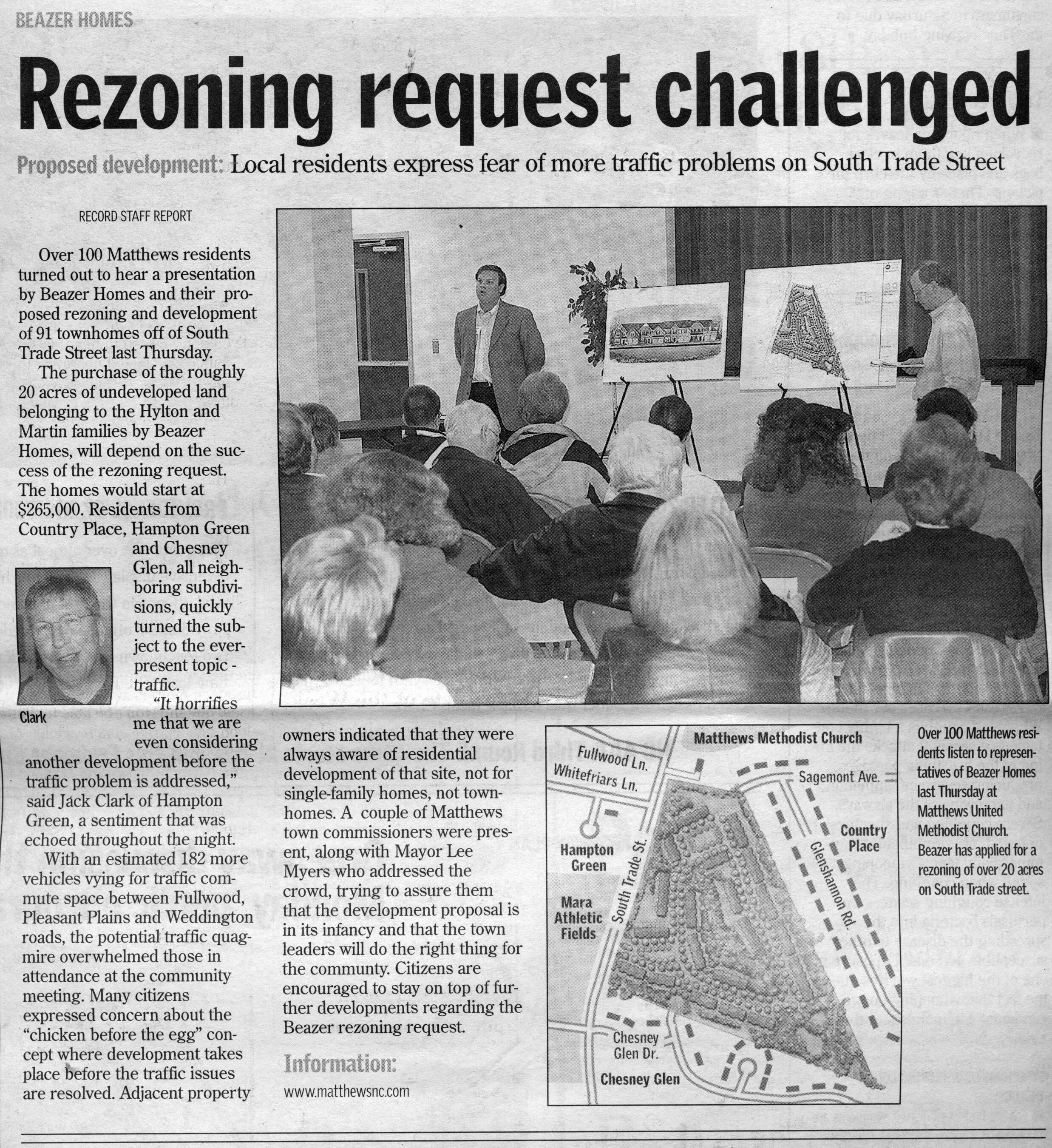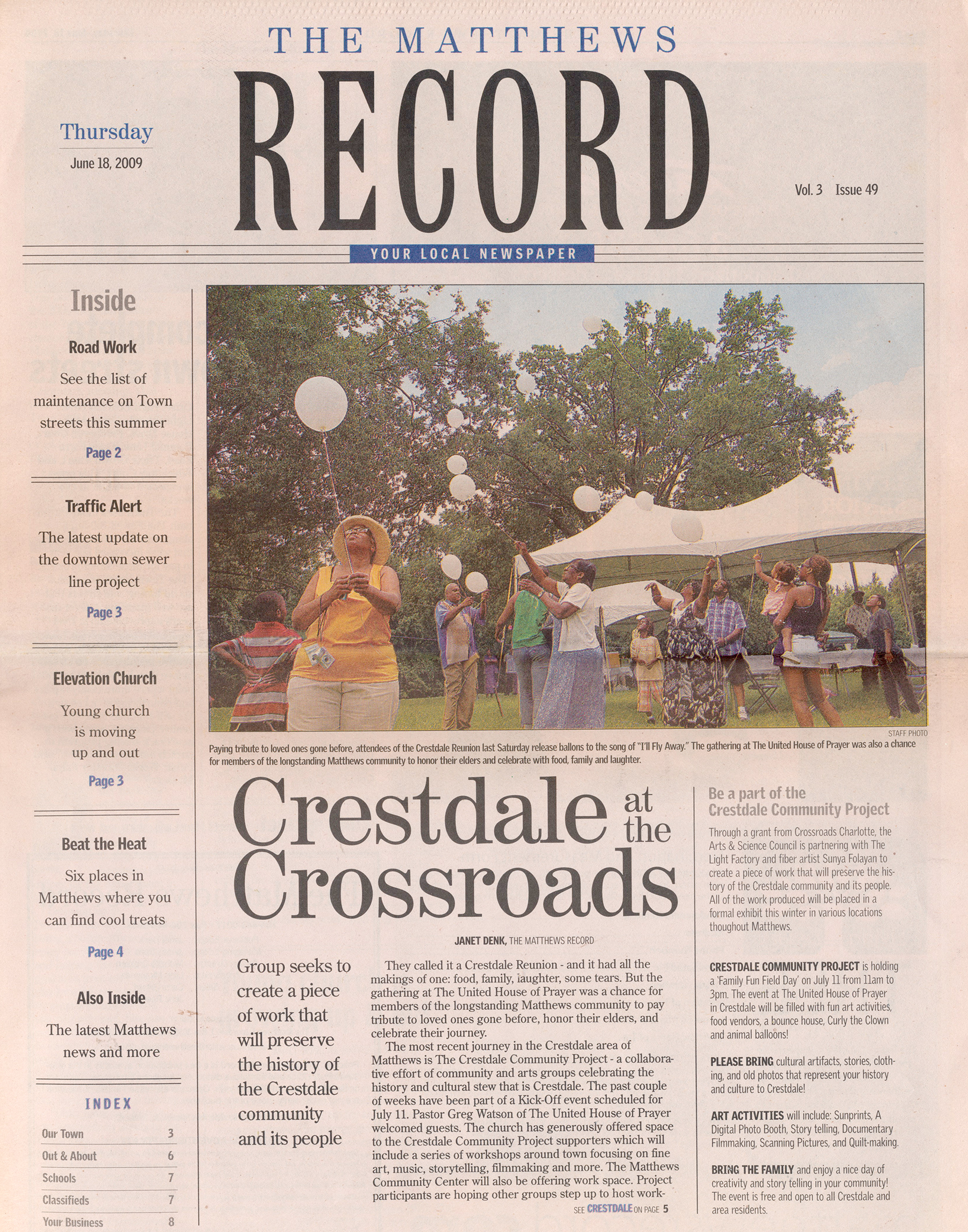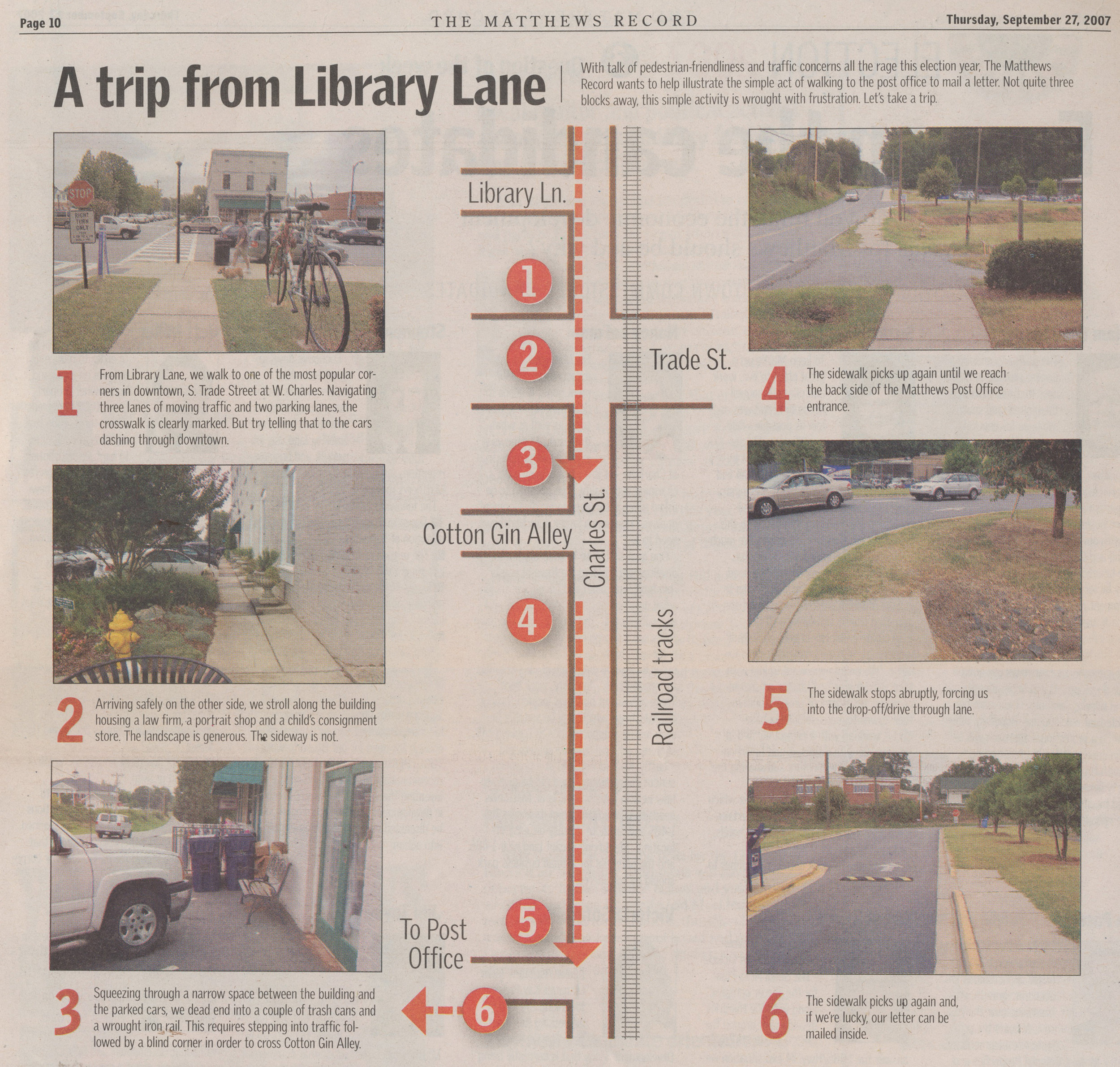With permission, The Beacon is archiving past issues of Matthews Record (also called Matthews News and Record and The Matthews Record) articles online. Throwback Thursday articles will include relevant content still facing Matthews today. This story was originally published August 9, 2007, and written by Janet Denk.
Always from the heart
Miss Edith is a writer. She never knew that about herself.
As a matter of fact, Edith Smith is still not convinced, even at the tender age of 99 years young, that she has much to say. But she enjoys words, listens intently and loves the company of other conversationalists — qualities that any writer worth their salt should possess. Edith Smith possesses them in spades.
“She’s remarkable,’ said fellow Happy Times Club member Barbara Stowers. ‘She lives in her home, still cooks and cleans for herself and writes letters to church members. She doesn’t drive, but she likes to get out,’ Stowers added. ‘And she’s ready to go when you call on her.'“
Both women were at the Levine Senior Center last Thursday for lunch and a special presentation by resident historian Caldwell Russell.
“That woman is one of my favorite ladies,” Russell said as the two hugged and caught up on the latest news. Miss Edith brags on Russell, recalling the day, many years ago, that he met her at the Matthews United Methodist Church door and welcomed her inside.
“He just brought me right down in the front row where he was sitting and held my hand the whole time. He’s my good, good friend.”
In this day of emails, text messages, and one minute-wisdom, Miss Edith corresponds the old-fashioned way.
By writing letters.
With pen and ink on paper.
Birthdays, condolences, congratulations, thanks, get well, or just a note to someone know God loves them.
“I just say what’s in my heart,’ she explained about her personal ministry. ‘Sometimes I can get carried away when I get to writing. But, I can’t help it. I suppose that’s just the way I am.”
Born in Virginia in 1908, Miss Edith moved to Charlotte to be with her son, Sam and his family. She has 3 grandchildren and 5 great-grandchildren. She was married for 64 years. Her husband passed away several years ago. Longevity, she claims, comes from her mother’s side. “I have one surviving cousin — Ginny — who’s 101 years old. Last time I spoke with her I said, ‘Did you ever think it would just be you and me one day?’”
The beautiful smile fades for just a minute. Then it’s gone and Miss Edith regales the visiting reporter with tales of cows and cousins and springhouses and grandparents and carefree days on her family’s farm. Miss Edith wrote her memoirs in an essay that was published in the Charlotte Observer years ago.
“It was an essay contest and I couldn’t believe mine got picked!,’ she recalls. ‘Oh, I’m just bragging a little now. But, I saw my name in print and I was just thrilled.”
Now, Miss Edith can thrill others by sharing her words on a card, or maybe a letter. But always, from the heart.






















